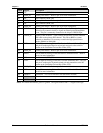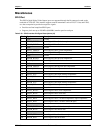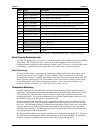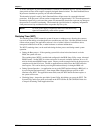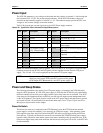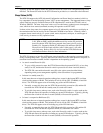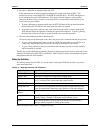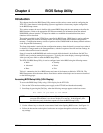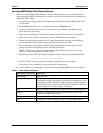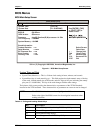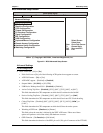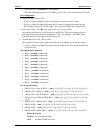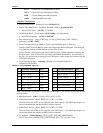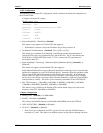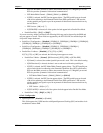
Chapter 4 BIOS Setup Utility
62 Reference Manual XTX 820
Accessing BIOS Setup Utility (Remote Access)
Once you set up the BIOS Utility for Remote Access (serial console or console redirection) in VGA
mode, entering the BIOS in the remote access mode, is very similar to the method used in entering the
BIOS with a VGA display.
1. Turn on the power supply to the XTX 820 baseboard assembly and access the BIOS Setup Utility
in VGA mode.
2. Set the BIOS feature Remote Access to [Enabled] under the Advanced menu.
3. Accept the default options or make your own selections for the balance of the Remote Access
fields and record your settings.
4. Ensure you select the type of remote serial terminal you will be using and record your selection.
5. Select Save Changes and Exit and then shut down the XTX 820 baseboard assembly.
6. Connect the remote serial terminal (or the PC with communications software) to the COM port
you selected on the XTX baseboard using a standard null-modem serial cable.
7. Turn on the remote serial terminal (or the PC with communications software) and set it to the
settings you selected and recorded earlier in the BIOS Setup Utility.
COM1, 115200, 8 bits, 1 stop bit, no parity, no flow control, and always for Redirection after
BIOS Post are the default settings for the XTX 820.
8. Restore power to the XTX 820 baseboard assembly and look for the screen prompt shown below.
Hit ^C if you want to run SETUP
9. Press the CTRL–C keys early in the boot sequence if Quick Boot is set to [Enabled].
If Quick Boot is set to [Enabled], you may never see the screen prompt.
10. Use the <Enter> key to select the screen menus listed in the Opening BIOS screen. See Figure 4-1.
Table 4-1. BIOS Setup Utility Menus
BIOS Setup Utility Menu Item/Topic
Main Settings Date and Time
Advanced Settings
ACPI Configuration, PCI Configuration, Graphics Configuration, CPU
Configuration, Chipset Configuration, I/O Interface Configuration, Clock
Configuration, IDE Configuration, USB Configuration, Keyboard/Mouse
Configuration, Remote Access (Serial Console) Configuration, Hardware
Health Configuration, and Watchdog Configuration
Boot Boot up Settings Configuration, Boot Device Priority, Removable Drives
Security
Setting or changing Supervisor/User Passwords, Boot Sector Virus
Protection, and Hard Disk Security
Power Power Management (APM) and Resume Power conditions
Exit Exiting with or without changing settings, Loading CMOS Defaults



